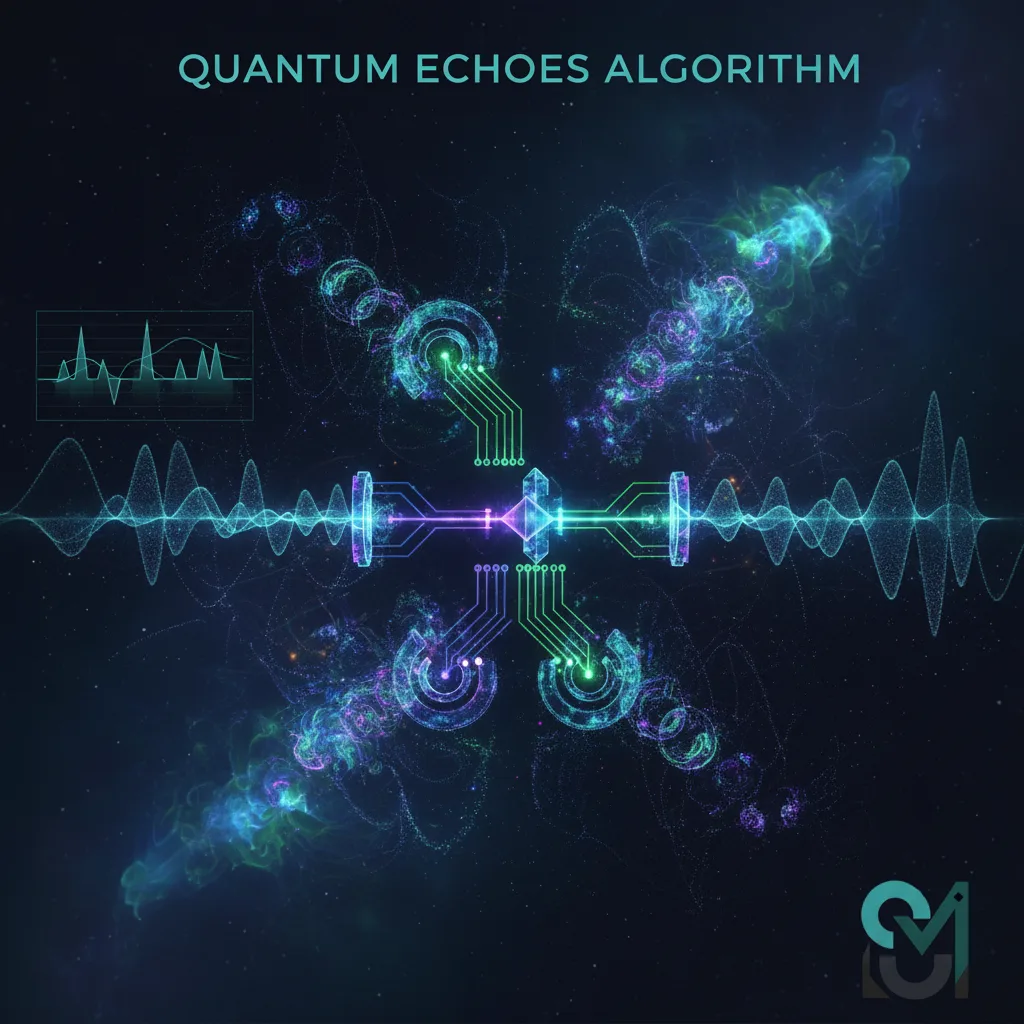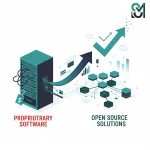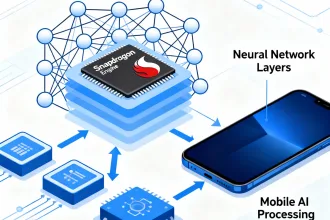Introduction
The quantum computing landscape experienced a seismic shift in October 2025 when Google announced a historic breakthrough that fundamentally changes our understanding of what’s possible with quantum machines. The company’s innovative Willow quantum chip has achieved the world’s first-ever verifiable quantum advantage—a monumental accomplishment that bridges the gap between theoretical quantum computing and practical, real-world applications. This achievement represents not merely a technological milestone, but a transformative moment that signals we’re entering a new era where quantum computers can solve problems previously considered impossible for classical machines, and do so with results that can be independently verified and reproduced.
Indice dei contenuti
- Introduction
- Understanding Google’s Willow Quantum Chip
- The Quantum Echoes Algorithm: A Breakthrough in Verifiable Quantum Advantage
- The Real-World Applications of Willow
- Technical Specifications and Performance Metrics
- Google’s Quantum Computing Roadmap
- Competitive Landscape and Industry Impact
- Challenges and Limitations
- Looking Forward: The Quantum Future
- Conclusione
Understanding Google’s Willow Quantum Chip
The Architecture Behind the Innovation
Google’s Willow quantum chip represents a quantum leap—quite literally—in superconducting quantum computing technology. Built on a foundation of superconducting circuits that function as artificial atoms, the 105-qubit processor operates with unprecedented precision and reliability. This architecture wasn’t designed haphazardly; rather, it embodies decades of accumulated knowledge from leading quantum researchers, including Michel Devoret, John Martinis, and John Clarke, who were recognized with the 2025 Nobel Prize in Physics for their foundational contributions to quantum computing.

The chip’s impressive specifications reflect meticulous engineering and innovation at every level. Willow achieves a remarkable 99.97% fidelity for single-qubit operations e 99.88% fidelity for entangling gates—accuracy levels that were previously thought to be unattainable at this scale. To put this in perspective, such precision is essential for quantum computing because even microscopic errors can cascade and corrupt calculations. The chip performs millions of measurements within seconds, accumulating more than one trillion measurements over the course of comprehensive testing protocols.
Breaking the 30-Year Error Correction Barrier
One of the most significant achievements of Willow isn’t just what it can compute, but rather how it fundamentally solves a problem that has plagued quantum computing for nearly three decades. Since the introduction of quantum error correction by Peter Shor in 1995, scientists faced a seemingly insurmountable challenge: quantum systems become increasingly noisy and error-prone as you scale up the number of qubits. This created a Catch-22—you needed more qubits to perform meaningful calculations, but adding qubits typically introduced more errors that corrupted results.
Willow shatters this assumption. Google’s researchers demonstrated that by implementing sophisticated error correction techniques, they could actually reduce errors exponentially as more qubits are added to the system. Testing progressively larger arrays—from a 3×3 grid of encoded qubits, to 5×5, to 7×7—Google achieved the holy grail of quantum computing: achieving “below-threshold” error correction. With each increase in array size, the error rate was cut in half, proving that quantum systems can scale successfully. This historic accomplishment fundamentally changes quantum computing’s trajectory from laboratory curiosity to practical technology.
The Quantum Echoes Algorithm: A Breakthrough in Verifiable Quantum Advantage
What Makes Quantum Echoes Revolutionary
In October 2025, Google published groundbreaking research in the journal Nature demonstrating the first-ever verifiable quantum advantage—a computation that a quantum computer can perform beyond the reach of classical machines, with results that can be independently checked and reproduced across different quantum platforms. This breakthrough centers on an ingenious algorithm called Quantum Echoes, which implements the out-of-time-order correlator (OTOC) to achieve unprecedented computational capabilities.
The beauty of Quantum Echoes lies in its elegance and profound implications. Rather than computing abstract bit-strings difficult to verify, the algorithm produces expectation values that can be cross-checked across devices and independently verified. This verifiability transforms quantum computing from a “trust us” proposition into a reproducible science. A quantum computer of similar caliber should be able to run the same algorithm and obtain identical results—a feature that builds credibility and paves the way for trustworthy quantum applications in critical domains like drug discovery and materials science.
The 13,000x Speed Advantage
When Google announced that Willow executed the Quantum Echoes algorithm 13,000 times faster than the world’s best supercomputer, the computing world took notice. To contextualize this advantage: the same computation that Willow completes in minutes would require even the Frontier supercomputer—one of the planet’s most powerful classical computing systems—to run for approximately two hours. Some estimates suggest that certain variants of this calculation would take classical computers three years to complete.
This isn’t merely a speed improvement—it’s an exponential leap in computational capability. A 13,000x speedup represents the quantum realm’s power to exploit superposition and entanglement in ways that classical computers, no matter how sophisticated, simply cannot replicate. The implications ripple across industries: drug discovery could accelerate from years to months, materials science simulations could model complex molecular interactions with unprecedented fidelity, and problems currently considered intractable might become routine.
How the Algorithm Works
Understanding how Quantum Echoes achieves this remarkable performance requires grasping the quantum mechanics at its core. The algorithm works by sending a carefully crafted signal into the quantum system housed on the Willow chip, perturbing a single qubit, and then precisely reversing the signal’s evolution. This creates a quantum echo—an amplified signal that reveals how disturbances propagate across the quantum system through constructive interference.
This quantum echo is extraordinarily sensitive, amplified by the phenomenon of constructive interference where quantum waves add up to become exponentially stronger. Google’s team performs these forward-and-backward evolution sequences with millions of measurements, analyzing how the signal overlaps to reveal the system’s hidden dynamics. The precision required is staggering: the chip must maintain quantum coherence across hundreds of operations without allowing noise and environmental interference to corrupt the delicate quantum states.
The Real-World Applications of Willow
Drug Discovery and Molecular Structure Analysis
While the current achievement is momentous, Google and the broader quantum computing community recognize that the most transformative applications lie on the horizon. One particularly promising near-term application involves using Quantum Echoes for enhanced molecular structure analysis through quantum computing-enhanced Nuclear Magnetic Resonance (NMR)—the same scientific principle underlying MRI technology.
In proof-of-principle experiments conducted in partnership with the University of California, Berkeley, Google used Quantum Echoes to study two molecules: one containing 15 atoms and another with 28 atoms. The results matched traditional NMR outputs while simultaneously revealing information not typically available from conventional NMR spectroscopy. This capability could revolutionize drug discovery by helping determine precisely how potential medicines bind to their target proteins—information critical to developing effective therapeutics. For pharmaceutical companies, accelerating this discovery pipeline by even months could translate to billions in value and, more importantly, faster treatments for patients suffering from serious diseases.

Materials Science and Energy Innovation
The implications extend far beyond pharmacology. Materials scientists stand to benefit enormously from quantum computing-enhanced analysis of molecular structures and interactions. Understanding how materials behave at the quantum level could revolutionize the design of:
- Advanced batteries for electric vehicles and renewable energy storage systems
- Novel polymers with custom properties for specific industrial applications
- Superconducting materials with enhanced performance characteristics
- Solar cell components with improved energy conversion efficiency
Google estimates that to reach practical, commercially-viable applications in these domains, quantum hardware will need to scale approximately 10,000-fold from current capabilities. While this sounds daunting, the fact that Willow has demonstrated scalable error correction—the fundamental requirement for such scaling—provides genuine optimism that this goal is achievable within the coming decade.
Broader Fundamental Research
Beyond specific applications, Quantum Echoes promises to unlock fundamental understanding of complex quantum systems. The algorithm’s design makes it useful for learning the structure of systems ranging from molecules to magnets to black holes. Physicists could use quantum computers enhanced by these techniques to explore previously inaccessible regimes of quantum mechanics, potentially leading to discoveries in condensed matter physics, quantum field theory, and our understanding of the universe itself.
Technical Specifications and Performance Metrics
Indicatori chiave di prestazione
To fully appreciate Willow’s capabilities, examining its technical specifications is essential:
| Specifiche | Prestazioni |
|---|---|
| Qubit Count | 105 qubits |
| Single-Qubit Fidelity | 99.97% |
| Two-Qubit Gate Fidelity | 99.88% |
| T1 Times (Coherence) | ~100 microseconds |
| Improvement over Previous Generation | ~5x |
| Speedup vs. Frontier Supercomputer | 13,000x (Quantum Echoes) |
| Benchmark: Random Circuit Sampling | ~5 minutes (vs. 10 septillion years classically) |
These metrics aren’t merely impressive numbers—they represent solutions to fundamental challenges that have frustrated quantum researchers for years. The dramatic improvement in coherence times (T1), where qubits can retain their quantum state, enables more complex calculations before errors accumulate.
Error Correction Achievement
Google’s researchers implemented surface code error correction on Willow, testing both a distance-5 and distance-7 code configuration. The distance-7 code demonstrated that error suppression increased exponentially with code distance—each increase of two in code distance reduced the logical error rate by more than half. The distance-7 logical qubit exhibited a lifetime more than double that of its best constituent physical qubits, validating that error correction genuinely improves overall system performance.
Critically, the team demonstrated real-time decoding capabilities, meaning errors are corrected fast enough that they don’t accumulate and ruin computations before they complete. This real-time decoding operates with a 1.1 microsecond cycle duration—extraordinarily fast by any standard—while maintaining acceptable accuracy. These experiments ran stably for more than several hours and executed up to one million cycles without performance degradation, both essential requirements for future large-scale quantum algorithms.
Google’s Quantum Computing Roadmap
Progress Toward Full-Scale Quantum Computers
Google has articulated an ambitious roadmap for developing practical, commercially-relevant quantum computers. Willow represents significant progress along this journey:
Milestone 1: Demonstrating quantum advantage (achieved in 2019 with Sycamore)
Milestone 2: Exponential error suppression with scaling (achieved in late 2024)
Milestone 3: Below-threshold error correction with real-time decoding (achieved with Willow)
Milestone 4: Long-lived logical qubits (current focus)
The long-lived logical qubit represents the next critical advancement. Unlike physical qubits, which decohere rapidly, logical qubits would maintain quantum information for extended periods despite the noisy physical implementation. Achieving this milestone would represent a transformative step toward fault-tolerant quantum computing capable of running extended, complex algorithms.
Timeline for Practical Applications
Google estimates that useful quantum computing applications in drug discovery, materials science, energy systems, and other fields could emerge within approximately five years, assuming continued progress on hardware scaling and error correction. However, reaching commercial viability requires not just hardware improvements but also development of novel algorithms specifically designed for near-term quantum processors. The company is actively collaborating with industry partners in pharmaceuticals, materials science, and energy sectors to identify and develop such applications.
Competitive Landscape and Industry Impact
Google’s Position in Quantum Computing
While Google leads the recent quantum computing narrative with Willow’s achievements, the competitive landscape includes formidable players. IBM continues developing its own quantum processors and quantum network services. Startups like IonQ (ion trap-based), Rigetti Computing, and others pursue alternative quantum computing architectures. China’s quantum computing efforts have also advanced significantly, with recent breakthroughs in superconducting quantum systems.
Google’s advantage stems from multiple factors: deep expertise in superconducting circuit design, substantial investment in quantum software development, integration with Google Cloud’s infrastructure, and partnerships with leading research institutions. The company’s open publication of results, including error rates and methodologies, has positioned Google as a thought leader and has accelerated the entire field’s progress.
Implications for the Broader Tech Industry
Quantum computing’s maturation threatens to disrupt multiple industries simultaneously. Cloud computing providers are preparing quantum computing services. Financial institutions are exploring quantum algorithms for portfolio optimization and risk analysis. Cybersecurity firms are developing quantum-resistant encryption standards. The race to build practical quantum computers has become strategically critical, with profound implications for technological leadership and economic competitiveness.
Challenges and Limitations
Current Constraints
Despite Willow’s remarkable achievements, significant challenges remain before quantum computers become transformative tools. The current 105-qubit system requires extreme operating conditions: temperatures near absolute zero, sophisticated isolation from electromagnetic interference, and meticulous calibration. Scaling to the 10,000+ qubit systems necessary for practical applications will require overcoming substantial engineering challenges.
Additionally, while Quantum Echoes demonstrates verifiable quantum advantage, it’s important to note that this specific algorithm may have limited practical applications compared to algorithms targeting drug discovery or materials science. The path from impressive benchmark performance to commercially valuable applications remains substantial.
The Gap Between Current and Practical Systems
Google acknowledges that reaching commercially relevant quantum computers represents an ongoing, multi-year challenge. The current generation of Willow chips is optimized for specific algorithmic demonstrations. Real-world applications will require tailored algorithms, better error correction codes, improved qubit quality, and deeper integration with classical computing systems. The “quantum advantage” demonstrated by Willow, while significant, applies to a narrow problem space rather than broadly applicable computation.
Looking Forward: The Quantum Future
Anticipated Developments
The quantum computing field is accelerating rapidly. Over the next few years, we can anticipate:
- Continued refinement of error correction techniques, with researchers targeting systems operating reliably below deeper thresholds
- Expansion of qubit counts toward hundreds and ultimately thousands of qubits
- Development of specialized quantum algorithms for specific industries including pharmaceuticals, materials science, energy, and finance
- Increased accessibility through cloud-based quantum computing services
- Hybrid quantum-classical systems where quantum processors handle specific computational tasks while classical systems orchestrate overall workflows
The Broader Quantum Ecosystem
Beyond Google, the quantum ecosystem continues expanding. Academic institutions are developing novel quantum computing approaches. Startups are commercializing quantum software and applications. Governments worldwide are investing billions in quantum computing research as part of national competitiveness strategies. This momentum suggests that quantum computing will transition from laboratory curiosity to practical industrial tool far faster than many experts previously estimated.
Conclusione
Google’s Willow quantum chip and the Quantum Echoes algorithm represent a watershed moment in computing history. For the first time, a quantum computer has demonstrated verifiable computational advantage—solving problems faster than classical supercomputers in ways that can be independently verified and reproduced. More importantly, Willow has solved the 30-year-old quantum error correction challenge, proving that quantum systems can scale with improving rather than degrading error rates.
The implications extend far beyond benchmark achievements. Drug discovery could accelerate dramatically. Materials scientists could design better batteries, superconductors, and polymers. Energy researchers could optimize fusion systems and renewable energy technologies. Financial institutions could develop sophisticated optimization algorithms. The applications are nearly limitless once quantum computers reach practical scale.
However, significant challenges remain. Scaling from 105 to 10,000+ qubits, developing algorithms specifically designed for real-world applications, and reducing operating costs all require sustained innovation and investment. Yet Willow provides genuine reason for optimism. Google has not merely announced an impressive benchmark; it has demonstrated fundamental progress on the underlying physics and engineering necessary for practical quantum computing.
The quantum computing era has begun. Willow is not the endpoint but rather a crucial waypoint on the journey toward transformative quantum technologies. Over the coming decade, as quantum systems scale and mature, we can expect technological breakthroughs that reshape industries, accelerate scientific discovery, and solve some of humanity’s most pressing challenges. The future of computing isn’t just classical or quantum—it’s hybrid systems where quantum processors tackle problems beyond classical reach while classical computers handle everything else. Google’s Willow chip brings that future closer than ever before.










